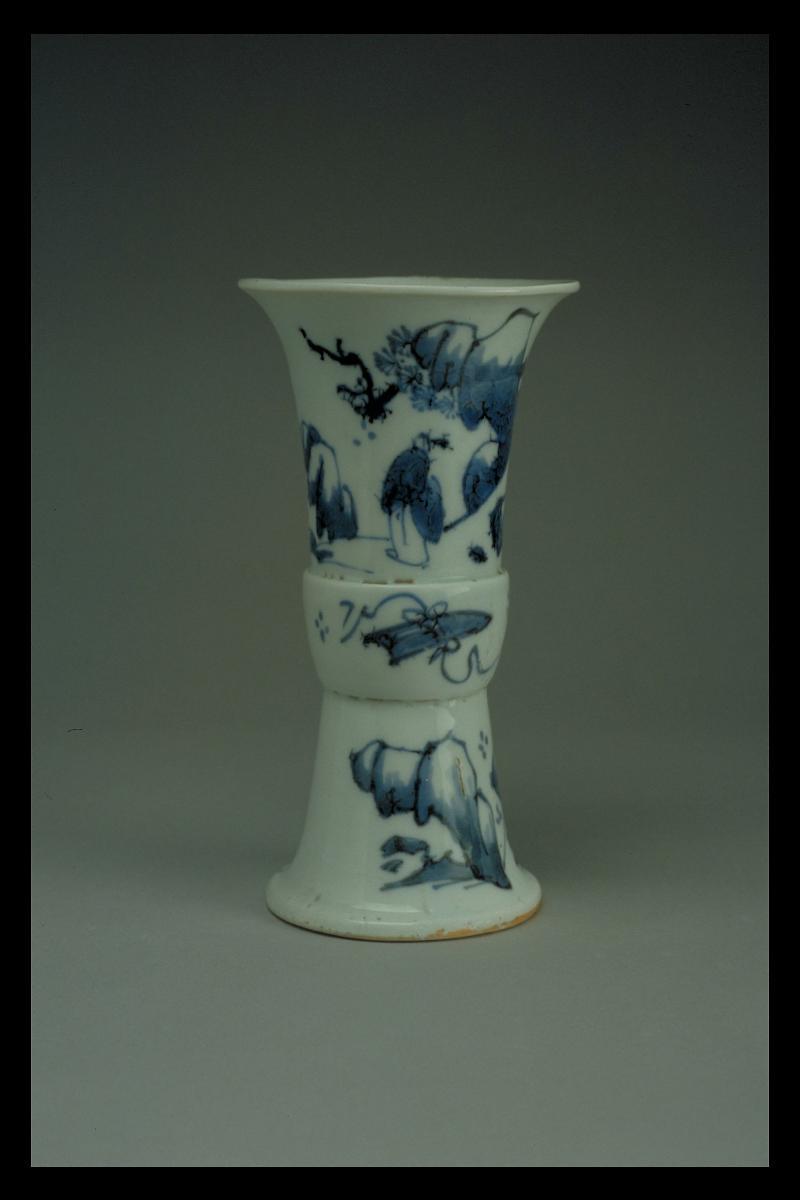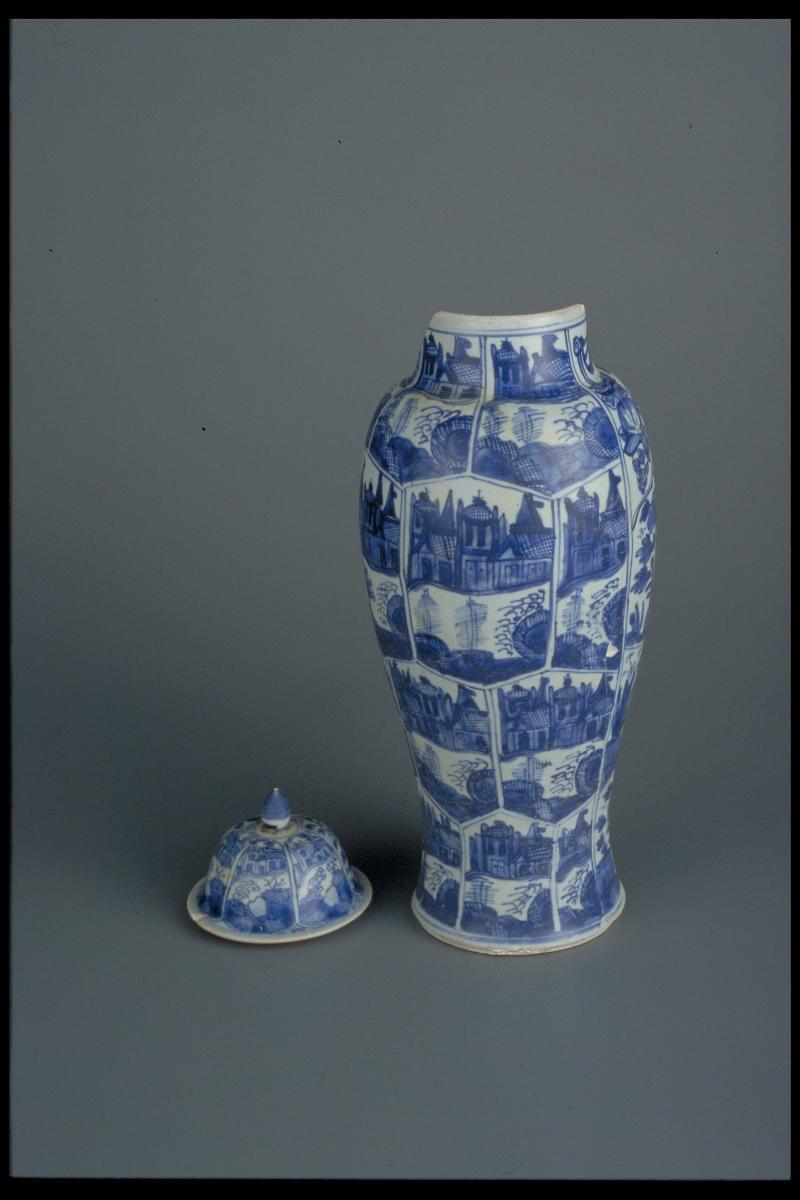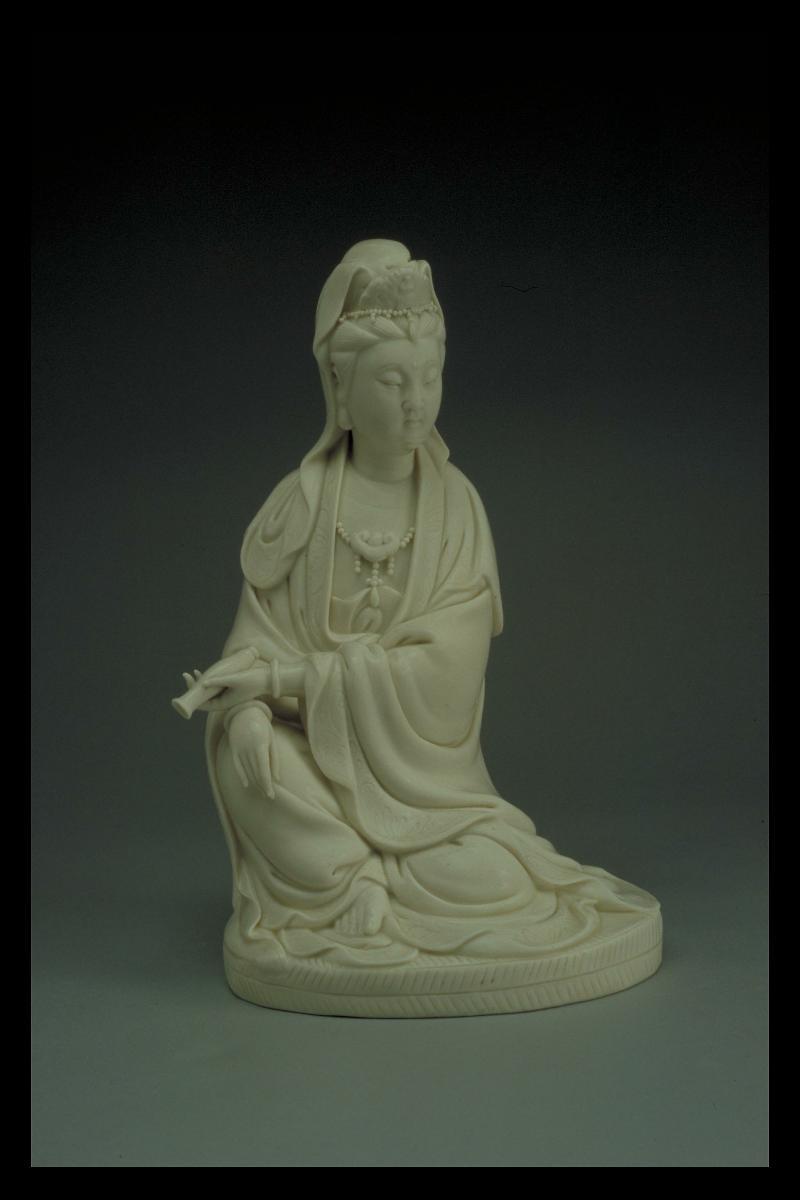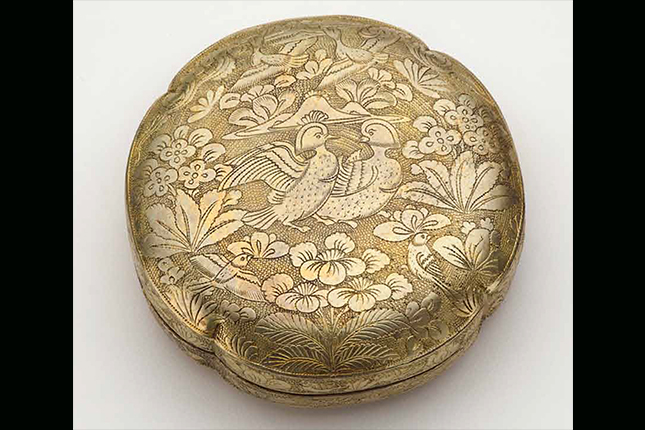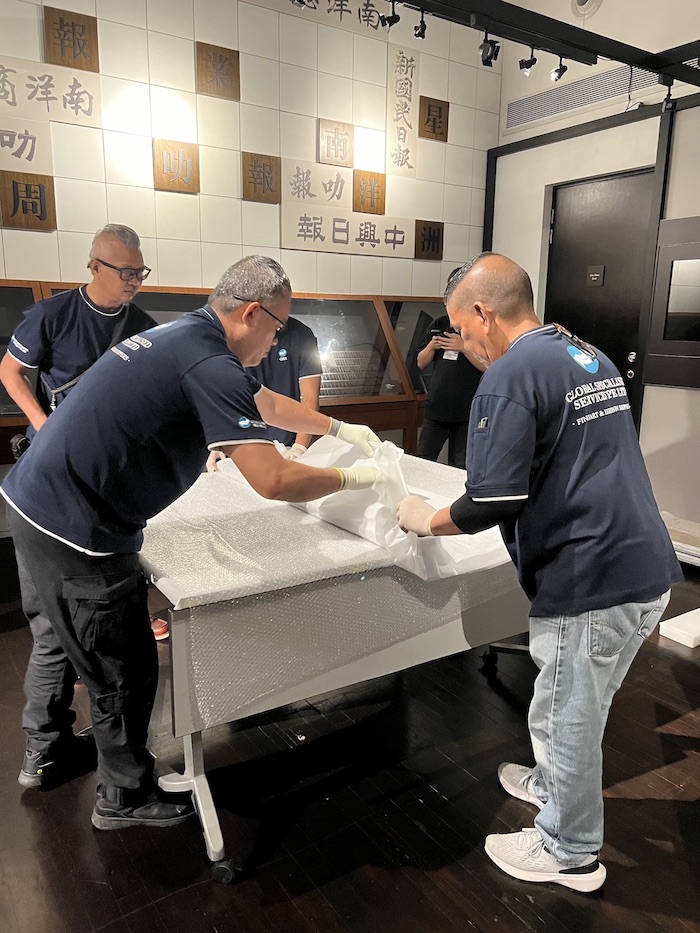This 'gu' beaker vase appears to have been thrown in one piece, unlike other large vases, which are usually potted in sections and joined at the middle. The radial lines or 'chattermarks' round the inner walls indicate the piece was thickly potted and then trimmed with a sharp tool, to produce thinner walls. This vase was inspired by the shape of the ancient bronze gu, a type of ritual wine vessel of the Shang period (c.1700–1027 BCE). Archaic style ceramic vessels became fashionable amongst scholar-connoisseurs such as Song dynasty Emperor Huizong (1100 – 1125CE).The use of archaic wares continued during the Ming dynasty (1368-1644). The fashion for archaism was revived again during the reign of Qianlong (1736–1795) when catalogues of the Imperial art collections inspired the production of all sorts of arts and crafts in ancient styles.Dehua, located on the southeast coast of Fujian province, is well known for its production of white porcelain, known to Europeans as 'blanc de Chine'. The earliest Dehua porcelain was produced as early as the 14th century but the production and quality of these porcelain peaked around the 17th and 18th centuries.






